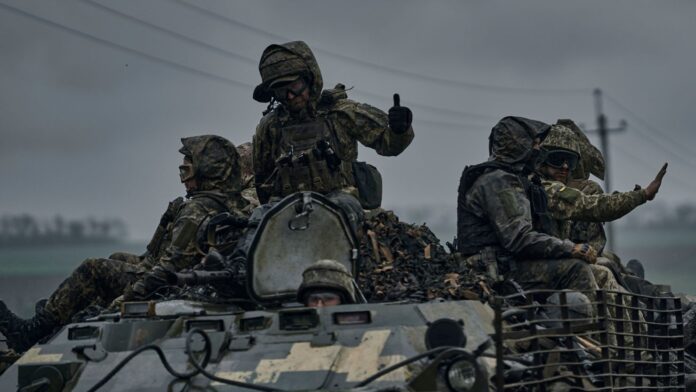Author: Emma Ashford
Affiliation: Georgetown University and the Reimagining US Grand Strategy Program at Stimson Center
Organization/Publisher: Foreign Affairs
Date/Place: September-October 2022/ USA
Type of Literature: Book Review
Word Count: 3622
Link: https://www.foreignaffairs.com/reviews/praise-lesser-evils-realism-foreign-policy-emma-ashford
Keywords: Classical Realism, Structural Realism, Geopolitics, Hyper-rationalism, Morals, Human Factors, War in Ukraine, the US Foreign Policy
Brief:
In this article, Ashford critically reviews two recent books about Realism in International Relations: “The Atlantic Realists: Empire and International Political Thought between Germany and the United States” by Matthew Specter, and “Unwritten Future: Realism and Uncertainty in World Politics” by Jonathan Kirshner. Both books address the limitations and potential of realism, focusing on “Classical Realism”, which is based on a negative view of human nature. Specter’s book examines the origins of classical realism in the pre-World War I period, attempting to uncover what he considers “the malevolent historical roots” of realist philosophy and its terminology. Kirshner’s book, on the other hand, aims to rehabilitate classical realism as a framework for understanding modern geopolitics, and to confront “Structural Realism” (Neorealism), which the author sees as having analytical shortcomings, hyper rationality, and a lack of moral consideration. Structural realism (both defensive and offensive) has come to dominate over other strands of realism and has become synonymous with realism in general.
The two books come amid growing questions about the feasibility and relevance of realism in explaining current wars and great power competitions, particularly the Ukrainian war. A number of prominent realists, led by John Mearsheimer, have argued that this war was a result of the structural factor of NATO’s eastward expansion, rather than the aggressive actions of President Putin, which has led to a decline in realism’s popularity. Opponents of realism have also criticized the theory as “meaningless”, as the war in Ukraine seems to demonstrate. This has led to a revival of the historical debate about the ethical dimension of realism, with some arguing that a realistic analysis of the harsh realities of international relations (based on anarchy and states’ pursuit of security and survival, acting in accordance with national interest rather than moral principles) endorses selfish behavior by states rather than providing a positivist diagnosis. So the realists have been accused of having no morals at all, as the debate on the Ukraine war demonstrate. For such reason Robert Gilpin wrote -in 1996- his famous essay, “No One Loves a Political Realist.”
The article is divided into four parts. In the first part, the author sets the context of the growing criticism of realism, which has led to a decline in its popularity after it gained acceptance among elites and the general public due to its often reasonable analysis of the ideological American foreign policy driven by liberal internationalism over the past three decades. Ashford believes that while realism provides useful broad lines of analysis regarding the war in Ukraine (such as the argument that NATO expansion into post-Soviet space contributed significantly to the outbreak of the war), it is flawed in many details. She also argues that the war in Ukraine demonstrates that some realist theories are as simplistic and unhelpful in explaining the conflict as they were during times of global geopolitical upheaval. According to Ashford, the realist theories presented in Specter and Kirshner’s books may not offer new insights, but they do review and update our understanding of the pragmatic and analytical model of classical realism, which may be the most suitable model for our multipolar world.
In the second part of the article, Ashford discusses Specter’s critique of classical realism and realism in general. Specter offers an alternative narrative on the origins of realism, examining the intellectual foundations of realism and the biographies of prominent (German and American) founding figures of realism such as Hans Morgenthau, Wilhelm Grewe, and Carl Schmidt. Specter argues that the common narrative of realism, which is promoted by the realist Edward Hallett Carr, is false and that classical realism has dark imperial origins. This narrative claims that classical realism was the intellectual reaction of German-American thinkers such as Morgenthau to the bloody wars of the 20th century. These thinkers rejected the idealism of US President Woodrow Wilson, whose failure to establish a League of Nations that would resolve conflicts between nations through law and norms after World War I led to the rise of Nazism and the outbreak of World War II. In response, these thinkers returned to classic notions of Realpolitik as represented in the works of Thucydides and Machiavelli and embodied by the German leader Otto von Bismarck. Specter disputes this narrative, arguing that the classical realists invented a noble line of great thinkers, such as Thucydides and Hobbes, because their ideas fit the classical realist worldview while avoiding their more questionable historical antecedents from the 19th century imperial geopoliticians. Additionally, Specter refutes the association of realists with “Bismarckian Realpolitik” and tries to prove the connection of realism with an anti-realpolitik imperial German school, “the Weltpolitik,” which is guided by social Darwinism and grants great powers the right to geopolitical expansion and domination. These ideas were embodied in Wilhelm II’s policy in the late 19th century, as well as in Hitler’s policy during World War II.
Ashford praises Specter’s genealogical work, but disagrees with some of his findings. She argues that there is nothing wrong with contemporary scholars seeking intellectual clues from history to support their case, and that Specter does not show how contemporary realists’ borrowing from historical concepts undermines the validity of their arguments. While it is true that classical realism formulated its arguments using terms familiar to 20th century imperialists, it also added terms such as “ethical seriousness” and “caution” to its legacy. If there are darker variants of realism in history, this should not invalidate more modern incarnations of the theory, such as “defensive realism”, which is a more moral approach that does not accept immoral principles or the early imperial roots of realism.
In the third part of the article, Ashford discusses Kirshner’s “Unwritten Future”. Unlike Specter, Kirshner finds much value in classical realism for the analysis of today’s world and calls on contemporary scholars to revive it due to its analytical richness based on the crucial role of intellectual and internal political factors. He focuses on recent academic works that highlight the role of factors such as honor, pride, and prestige in international affairs, which are core factors for classical realists. He also criticizes structural realism, arguing that it falls into a “hyper-rationalist” view of the world that ignores the moral factor. Neorealism overestimates the rational causes of war and cannot explain anything beyond the stasis of the international system. Kirshner poses a series of problems that structural realists have struggled with recently, such as how to reconcile morality with a fundamentally amoral theory, and the malleability of the concept of the national interest. He also argues that structural realism is better at pointing out the errors of other approaches than at suggesting its own solutions, and cannot fully explain why and when wars happen or how leaders and populations will react when they do. This is why he emphasizes the importance of integrating human factors, which classical realism focuses on, in the analysis of wars.
Ashford attributes Kirshner’s perception of the “hyper-rational” language of structural realists to their attempt to make their beliefs about international politics “scientific,” rather than appearing as ideological as they do to their liberal opponents. Liberalists believe that states can rise above power politics and transcend conflict through trade, international institutions, and international law, while realists disagree and see a lot of ideology and political delusions in liberalist arguments. This is why the language of realists is often seen as more rational, less ideological, and lacking in moral consideration. However, Kirshner argues that both realism and liberalism have ideological underpinnings, and that realists should stop pretending to be scientists and return to the messier terrain of classical realism, which is more analytically rich.
In the last part of the article, Ashford defends the virtues of realism, emphasizing the need for it to explain international affairs or guide American foreign policy despite its limitations. In response to critics who argue that realism succeeds more in criticism than in offering alternatives, Ashford points out that there is no single political realism. There are different views within the realist paradigm and among realists on various international issues, such as how to deal with China. This has made it difficult for realists to shape policies within the current US administration or its successor. However, realists still put pressure on US administrations to justify their policy choices or adopt more pragmatic and non-ideological policies, despite their complex history with US policymakers.
Although both books provide a critical overview of the problems facing realism, they fail to offer alternatives. Ashford believes Kirshner’s book is relatively better in this regard, as it assesses what it would mean in practice to rehabilitate classical realism. For example, it explores the shortcomings of classical realism and incorporates issues of political economy into its framework, as well as incorporating classical realist views into current policy debates to guide them. However, Ashford also criticizes some inconsistencies in Kirshner’s vision. While arguing that great powers have an opportunity to reassess their global commitments, he also calls on the United States to maintain the status quo, claiming that major changes are incompatible with realism’s emphasis on prudence. In contrast, Ashford believes that Specter largely punts on the question of the future of US foreign policy. He makes it clear that realism is not a reasonable path forward, at least not until it incorporates postcolonial, feminist, and critical theoretical insights, because it is too respectful of imperialist approaches, too undemocratic, and too rooted in ethically questionable philosophy. This distaste, according to Ashford, reflects the progressives’ concern about pragmatism and moderation in foreign policy when these concepts come into conflict with universal values. Realists are well aware of these problematic issues. In foreign policy, realism is often a choice between the lesser of evils. Realism does not condone “political ideals and moral principles, but it requires indeed a sharp distinction between the desirable and the possible,” as Morgenthau wrote. Pretending that moral principles or values can override all constraints of power and interest is not political realism; it is political fantasy. Finally, Ashford believes that with the world’s shift towards multipolarity, realism will once again become more important for the conduct of US foreign policy.
By: Djallel Khechib, CIGA Senior Research Associate




